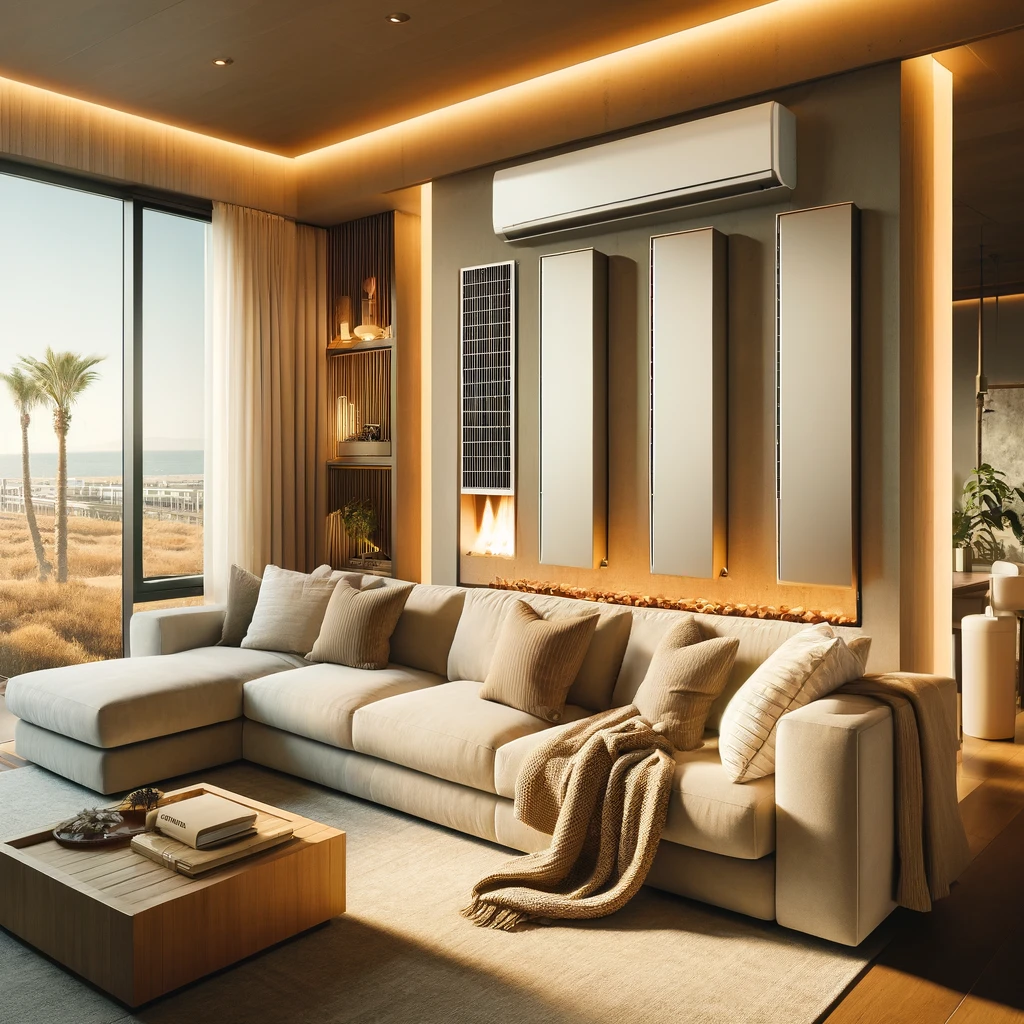When it comes to maintaining a comfortable home in San Diego, heating and air conditioning systems play a crucial role. Whether you’re sweltering in the summer heat or seeking warmth during a chilly evening, understanding how these systems work and how to maintain them is key to your comfort. In this guide, we’ll delve into everything you need to know about San Diego heating and air, from selecting the right system to routine maintenance and energy-saving tips.
Why San Diego Needs Heating and Air Conditioning
San Diego is renowned for its beautiful, moderate climate. However, San Diego heating and air needs can be more complex than you might think. Despite the region’s generally mild weather, temperature fluctuations can be significant, especially inland. During summer, temperatures can soar into the 90s, while winter nights can dip into the low 40s.
Heating and air conditioning systems are essential to ensure your home stays comfortable year-round. But with so many options and factors to consider, how do you choose the best system for your needs?
Choosing the Right Heating System for San Diego
When it comes to heating your San Diego home, you have several options:
- Furnaces: These are the most common heating systems in American homes. They work by blowing heated air through ducts that deliver the warm air to rooms throughout the house via air registers or grills. Furnaces can run on various fuels, including natural gas, propane, or electricity. In San Diego, natural gas furnaces are popular due to their efficiency and the relatively low cost of natural gas.
- Heat Pumps: Heat pumps are incredibly efficient because they move heat rather than generate it. In the mild San Diego climate, they can be an excellent choice as they provide both heating and cooling. During the winter, they pull heat from the outside air (even when it’s cold) and transfer it inside. In the summer, the process reverses to cool your home.
- Ductless Mini-Splits: These systems are perfect for homes without existing ductwork. They offer the flexibility to heat specific areas or rooms, making them energy-efficient and ideal for San Diego’s varied climate.
- Radiant Heating: This method involves heating surfaces, such as floors or walls, to radiate heat into the living space. Radiant heating is less common but provides consistent, comfortable heat.
Each system has its pros and cons, and the best choice depends on your specific needs, home layout, and budget. Consulting with a professional can help you decide which option is right for you.

Air Conditioning Options in San Diego
While heating is crucial during the colder months, air conditioning is vital to stay cool in the San Diego heat. Here are the main types of air conditioning systems you can consider:
- Central Air Conditioning: This is the most common type of air conditioning in homes. It cools air at a central location and then distributes it to rooms through a series of ducts and fans. Central air conditioning systems are efficient and provide even cooling throughout the home.
- Ductless Mini-Split Systems: These systems are similar to their heating counterparts. They don’t require ductwork, making them ideal for homes without existing air ducts. They also allow for zoned cooling, which can save energy by only cooling the rooms you’re using.
- Window Units: While less efficient than central or ductless systems, window units are a good option for cooling individual rooms. They’re easy to install and can be a cost-effective solution for smaller spaces.
- Portable Air Conditioners: These are standalone units that can be moved from room to room. They’re less efficient than built-in systems but offer flexibility and convenience.
When choosing an air conditioning system, consider factors such as the size of your home, energy efficiency, and your cooling needs. Energy efficiency is especially important in San Diego, where you may need to run your AC for extended periods during the hottest months.
The Importance of Regular Maintenance
Regular maintenance of your heating and air conditioning systems is crucial to ensure they operate efficiently and last as long as possible. Here are some key maintenance tips:
- Change Your Filters: Air filters should be checked monthly and replaced at least every three months. Dirty filters can reduce efficiency, increase energy costs, and shorten the lifespan of your system.
- Inspect and Clean Coils: Over time, the evaporator and condenser coils collect dirt, which reduces the system’s ability to absorb and transfer heat. Regular cleaning helps maintain the system’s efficiency.
- Check Refrigerant Levels: Low refrigerant levels can indicate a leak or an undercharged system. Both can reduce efficiency and increase energy costs.
- Inspect Ductwork: Leaky or poorly insulated ducts can cause significant energy loss. Make sure your ducts are sealed and insulated to keep your system running efficiently.
- Schedule Professional Tune-Ups: A professional technician can spot potential issues before they become major problems. Regular tune-ups can extend the life of your system and ensure it’s running at peak efficiency.
Energy-Saving Tips for San Diego Residents
San Diego’s climate offers plenty of opportunities to save on heating and air conditioning costs. Here are some energy-saving tips to help you stay comfortable without breaking the bank:
- Use a Programmable Thermostat: Set your thermostat to automatically adjust the temperature when you’re not home. This can significantly reduce your energy usage.
- Seal Your Home: Make sure your home is well-insulated and that doors and windows are sealed properly. This prevents warm air from leaking out in the winter and cool air from escaping in the summer.
- Utilize Ceiling Fans: Fans can help distribute air more evenly and reduce the load on your heating and air conditioning systems. In the summer, set your fans to rotate counterclockwise to create a cooling breeze.
- Take Advantage of Natural Ventilation: On cooler days, open windows and doors to let in fresh air instead of running your air conditioner.
- Shade Your Home: Use blinds, curtains, or shades to block out the sun during the hottest part of the day. Planting trees or installing awnings can also provide natural shade and reduce cooling costs.
When to Replace Your System
Even with regular maintenance, there comes a time when you’ll need to replace your heating and air conditioning systems. Here are some signs that it might be time for an upgrade:
- Frequent Repairs: If your system needs constant repairs, it might be more cost-effective to replace it.
- Increased Energy Bills: Older systems tend to be less efficient, leading to higher energy costs. A new, energy-efficient system can save you money in the long run.
- Inconsistent Temperatures: If some rooms in your home are consistently hotter or colder than others, it could indicate that your system is struggling to maintain a consistent temperature.
- Unusual Noises: Strange noises, such as banging or grinding, can indicate serious issues with your system.
- Age: Most heating and air conditioning systems last about 10-15 years. If your system is approaching this age, it’s a good idea to start thinking about a replacement.
Choosing the Right HVAC Contractor
Selecting a reliable HVAC contractor is crucial for maintaining and installing your heating and air conditioning systems. Here are some tips to help you choose the right contractor:
- Check Credentials: Make sure the contractor is licensed and insured. This protects you in case something goes wrong during the installation or repair.
- Ask for References: A reputable contractor should be able to provide references from satisfied customers. Don’t hesitate to ask for them and follow up to get a sense of the contractor’s work quality.
- Get Multiple Estimates: Don’t settle for the first estimate you receive. Get quotes from multiple contractors to ensure you’re getting a fair price.
- Read Reviews: Online reviews can provide valuable insight into a contractor’s reputation and customer service.
- Ask About Guarantees: A good contractor should stand behind their work. Ask about any guarantees or warranties they offer on their services and products.
Conclusion
Maintaining a comfortable home in San Diego involves understanding and taking care of your heating and air conditioning systems. From choosing the right system to regular maintenance and energy-saving tips, this guide covers all the essential aspects of San Diego heating and air. Whether you’re considering a new system or looking to extend the life of your current one, following these guidelines will help ensure your home stays cozy and energy-efficient year-round.
If you need help with your heating and air needs, don’t hesitate to contact us at Ryan Cool Air. Our team of experts is here to assist you with everything from routine maintenance to system installation.

